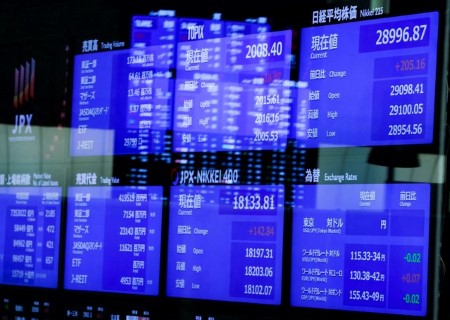




Monthly Economic Update: One for the road
 DOWNLOAD
DOWNLOAD

Inflation Update: Still low, still slow
 DOWNLOAD
DOWNLOAD

Philippines Trade Update: Exports momentum continues
 DOWNLOAD
DOWNLOAD


Japan’s equity juggernaut rolls on

Jan 16 – Another day, another leap to a fresh 34-year peak. Is there anything that will stop the Japanese equity juggernaut?
There isn’t much on the Asian economic and policy calendar to give markets a steer on Tuesday – volume will pick up as US markets reopen after the Monday holiday – but Japanese producer price figures could give Japan bulls pause for thought.
Or the green light for another whoosh higher.
The consensus view in a Reuters poll of economists suggests the year-on-year disinflation in the country’s goods-producing sector seen over the last year flipped into outright deflation in December.
The annual rate of goods inflation is expected to fall to -0.3% in December from 0.3% in November, sliding below zero for the first time since February 2021. A year ago in December 2022, prices were rising at a 10.2% annual rate.
These figures will be closely scrutinized. Easing producer price pressures will likely keep consumer inflation on its downward path toward the Bank of Japan’s 2% target, relieving the pressure on the central bank to “normalize” policy.
The Japanese bond market reflects the extent to which investors are rethinking the BOJ policy path, with the two-year yield on Monday falling below zero for the first time since July.
The Nikkei 225 index registered its sixth consecutive rise on Monday through 36,000 points. The cumulative gain in those six sessions is almost 10%, so perhaps a hotter-than-expected producer price report will be the catalyst for some profit-taking.
On a longer-term horizon, the market may be ripe for a correction too. Otavio Costa at Crescat Capital notes that the Japanese stock market cap is around 150% of GDP, which he reckons makes it one of the most overvalued in the world.
In China, meanwhile, the central bank on Monday surprised markets by keeping its medium-term policy rate steady, dashing hopes for a cut to shore up the country’s uneven post-pandemic recovery.
The People’s Bank of China disappointed market expectations for a cut as it held the rate on almost 1 trillion yuan worth of one-year medium-term lending facility (MLF) loans to some financial institutions unchanged at 2.50%. The MLF was last cut in August 2023, from 2.65%.
The PBOC is in a tight spot. The economy needs stimulus but cutting rates will probably push the already weak yuan even lower, which could risk domestic capital flight and deter investment from overseas.
The onshore yuan weakened anyway on Monday, sliding to a one-month low of 7.1813 per dollar, an indication of just how delicate the PBOC’s task is.
Here are key developments that could provide more direction to markets on Tuesday:
– Japan corporate goods prices (December)
– Australia consumer sentiment (January)
– South Korea import, export prices (December)
(By Jamie McGeever; Editing by Lisa Shumaker)
This article originally appeared on reuters.com





 By Reuters
By Reuters